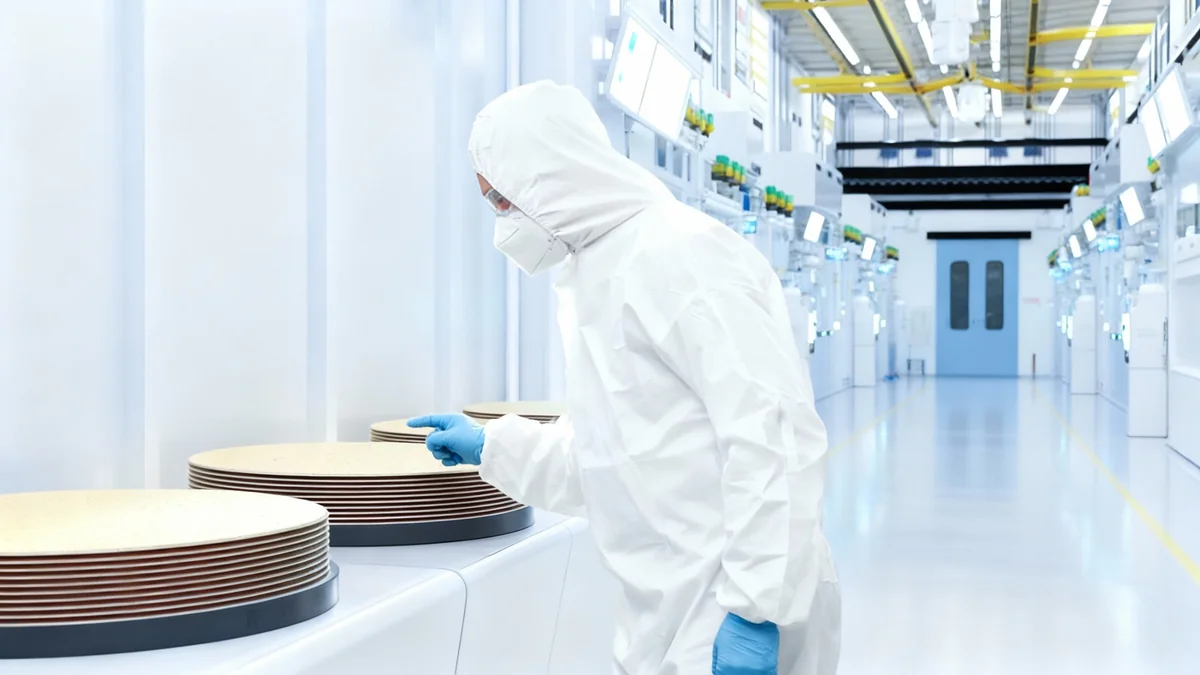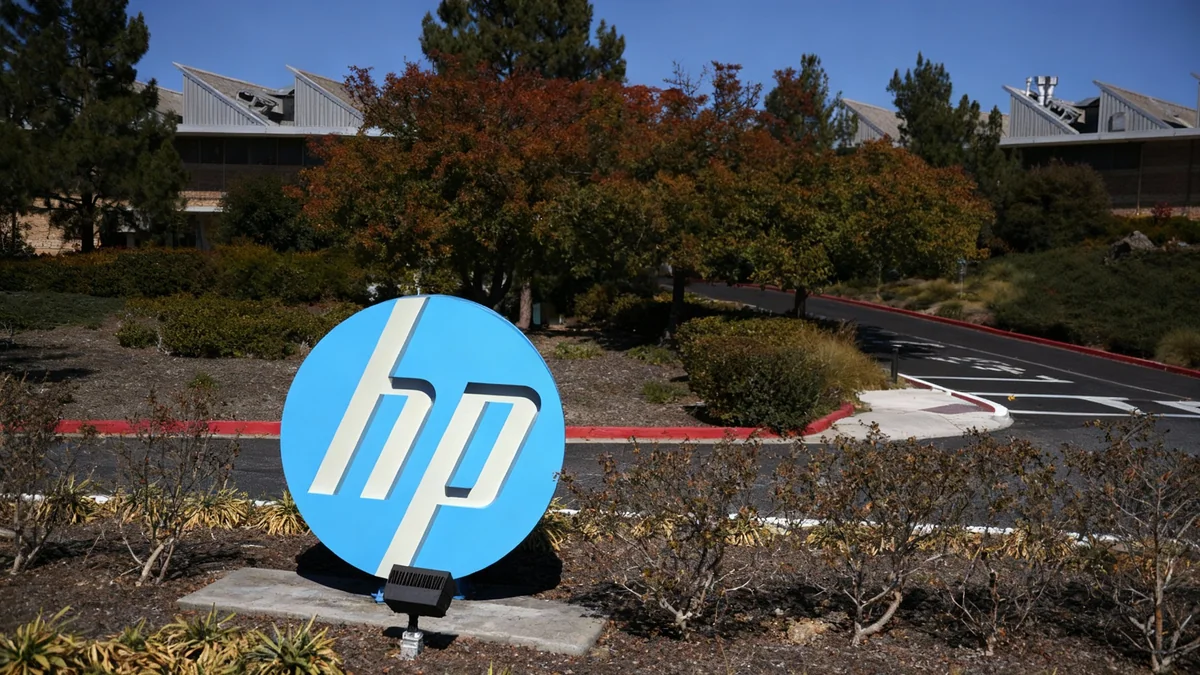Nvidia, once a niche semiconductor company, has become the world's most valuable firm in the last three years. This growth is largely due to its Graphics Processing Units (GPUs), which power the artificial intelligence (AI) revolution. Nvidia GPUs are essential for large language models, autonomous vehicles, robotics, and advanced video rendering. However, a new startup, Cerebras, claims its chips can process AI models 20 times faster than Nvidia's hardware, potentially disrupting the market.
Key Takeaways
- Nvidia's GPUs are central to the current AI boom, making it the world's most valuable company.
- Cerebras offers a unique Wafer Scale Engine, a single, massive chip designed to eliminate inter-chip communication delays.
- Cerebras claims its chips can power AI models 20 times faster due to increased efficiency and reduced bottlenecks.
- Nvidia maintains a strong market position through its established CUDA software platform and robust ecosystem.
- Investing in Cerebras is currently limited to private investors, with an IPO on hold after a recent funding round.
Nvidia's Rise and Market Position
Nvidia's journey from a specialized semiconductor manufacturer to the globe's most valuable corporation highlights the critical role of its GPUs. These processors are the core engine behind modern AI applications. They enable the complex calculations required for training and deploying advanced AI models across various industries.
The company's market capitalization stands at an impressive $4.5 trillion. Over the past year, Nvidia's stock has seen substantial growth, with a year-to-date increase of +32.50%. This performance reflects the high demand for its technology.
"Nvidia's graphics processing units (GPUs) have become the engine of the artificial intelligence (AI) revolution -- fueling everything from large language models (LLMs) to autonomous vehicles, robotics, and high-end video rendering."
Nvidia Key Data Points
- Market Cap: $4.5 trillion
- YTD Change: +32.50%
- Gross Margin: 69.85%
- Average Volume: 174,033,791 shares
Cerebras' Innovative Wafer Scale Engine
Cerebras is attracting significant attention for its innovative approach to chip design. Traditional AI systems often rely on thousands of small, powerful Nvidia GPUs clustered together. These clusters perform the extensive calculations needed for AI model training. However, this method introduces inefficiencies. Data must constantly move between chips using high-speed networking, causing communication delays, increasing energy consumption, and adding technical complexity.
Cerebras has adopted a different strategy. Instead of linking numerous smaller chips, it developed a single, massive processor. This processor, called the Wafer Scale Engine (WSE), is the size of an entire silicon wafer. It integrates hundreds of thousands of cores onto one piece of silicon, allowing them to work together seamlessly. This unified architecture eliminates the need for data to travel between separate chips, significantly boosting speed and reducing power usage.
Efficiency as a Core Advantage
Cerebras' central concept is efficiency. By keeping an entire AI model within a single chip, the wafer-scale processor eliminates wasted time and power associated with inter-chip communication. This design directly supports Cerebras' claim of 20 times faster performance. The improvement does not come from higher clock speeds but from optimizing data flow and removing bottlenecks in the system.
Understanding Wafer-Scale Integration
Wafer-scale integration involves creating a single, very large integrated circuit from an entire silicon wafer. This contrasts with traditional methods where wafers are cut into many smaller chips. By using the whole wafer, Cerebras can integrate many more processing cores and memory units into one component, reducing latency and increasing bandwidth within the chip.
Practical Benefits and Market Potential
The practical advantage of Cerebras' architecture is its simplicity. Managing, cooling, and synchronizing tens of thousands of GPUs is a complex task. A single Cerebras system can fit into just one standard server rack, ready for deployment. This can lead to significant cost savings in AI infrastructure, including reduced space, power, and cooling requirements.
These benefits position Cerebras as a strong contender in the evolving AI hardware market. Its focus on efficiency and simplified deployment could appeal to organizations seeking to optimize their AI operations and reduce overall infrastructure expenses.
Nvidia's Enduring Strengths
Despite the emergence of new players like Cerebras, Nvidia remains the undisputed leader in AI computing. Its dominance extends beyond powerful hardware. Nvidia's CUDA software platform has created a deeply entrenched ecosystem. Almost every major hyperscaler builds its generative AI applications on CUDA. This strong software foundation acts as a significant competitive advantage.
Replacing such an established ecosystem requires more than just superior hardware. It demands a complete change in how businesses design and deploy AI, forcing them to consider the operational burden and costs associated with switching platforms.
- CUDA Ecosystem: Nvidia's proprietary software platform is widely adopted.
- Market Leadership: Established presence across various AI applications.
- Versatility: GPUs serve as general-purpose workhorses for diverse tasks.
The Expanding AI Chip Market
The total addressable market (TAM) for AI chips is growing rapidly. This expansion suggests there is room for various architectures to coexist alongside established players like Nvidia. For instance, Alphabet's Tensor Processing Units (TPUs) are optimized for deep learning tasks, while Nvidia's GPUs offer versatility across many applications.
This dynamic indicates that Cerebras could carve out its own niche within the AI chip landscape without needing to entirely displace Nvidia. Different AI workloads may benefit from specialized hardware, leading to a more diverse and competitive market.
Investing in Cerebras and the Broader AI Market
Cerebras previously explored an initial public offering (IPO) and even filed a draft S-1 document. However, after securing a recent $1.1 billion funding round, the company has put its IPO plans on hold. Currently, investment opportunities in Cerebras are primarily available to accredited investors, venture capital (VC) firms, and private equity funds.
For everyday investors, a more practical approach involves investing in established chip leaders. Companies such as Nvidia, Advanced Micro Devices (AMD), and Taiwan Semiconductor Manufacturing (TSMC) are well-positioned to benefit from the explosive growth in AI infrastructure spending. Additionally, ancillary partners like Broadcom or Micron Technology also stand to gain from this expanding market.
The AI sector continues to attract significant investment, reflecting its transformative potential across industries. Investors should consider diversified portfolios within the semiconductor and AI infrastructure space to capitalize on this growth.





